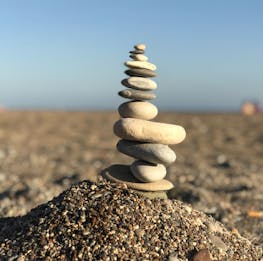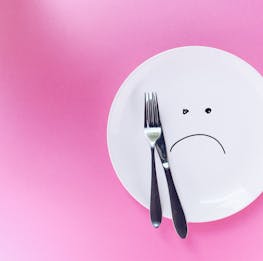The 4-Hour Body Summary
An Uncommon Guide to Rapid Fat-Loss, Incredible Sex, and Becoming Superhuman
We've learned about The 4-Hour Workweek, but what if we could apply the same logic to our bodies?
The 4-Hour Body is an insightful multi-disciplinary approach to hacking our bodies. Author Tim Ferriss provides a guide to losing weight, gaining muscles, and improving health and wellbeing.
Tim Ferriss is the 4-Hour guru, entrepreneur, and author who has a history of poor health. Throughout childhood, he was unwell, and this inspired him to learn more about how we can configure our bodies using experimentation. The benefit of self-experimentation is that it's an approach that can be done quickly, and it becomes apparent what works and what doesn't.
This Briefer summary looks at The 4-Hour Body, a lifestyle that culminated from a 28-day experiment. By looking at research, interviews, and self-experimentation, we'll learn how to hack our bodies, lose fat, gain muscle, and get a lot healthier.
Getting Started
The premise is that we use this book to build from recommendations, in order to tailor our own program. However, as with any lifestyle change, it's essential to consult with a doctor beforehand.
The first part of the experiment is to ascertain our body's M.E.D, or Minimum Effective Dose. To illustrate M.E.D, Ferriss uses the example of boiling water. When boiled, water reaches boiling point at 212 degrees Fahrenheit. While we can ostensibly boil it for longer, this is a pointless exercise because water cannot get any hotter than boiling. The analogy here is that once you've reached a certain point, it's futile to try and exceed it because it just wastes time and energy.
Ferriss suggests that to begin this program, we need a complete lifestyle overhaul, because it's a lot easier to stick to a schedule when we attack it wholeheartedly. To adopt this approach, we need to decide and then be forceful about implementing it. This can be tricky, so we need to be honest with ourselves and interrogate why the change needs to happen. Knowing the reason why something is important, motivates us to get started.
Ferriss explains this with what he calls a "Harajuku moment." A Harajuku moment refers to an experience that Chad Fowler, a friend of the author, had while in Japan. Fowler was shopping and realized that it didn't matter what he bought because nothing would look good on him as he was overweight. It was in this moment that he understood what he needed to do to change his life.
Once we've had the epiphany to change, we need to set goals and variables. We need to establish what works for us, and what doesn't. Ferriss explains that it can be difficult to measure variables precisely, so it's a good idea to begin with an estimate. However, it's also crucial to be competitive with ourselves and stretch our goals and objectives. It is a fine line though, because there's the tendency to expect perfection all of the time. Be intentional with what you want to achieve, and then reframe how you view tasks, and accept that sometimes you won't do something perfectly. Sometimes we battle to finish a task, or we don't do as well as we might expect. The fact is that doing something is better than doing nothing, and a sense of energy and purpose builds over time.
We also need to be a lot more mindful of our behaviors. The ability to recognize unhealthy actions is so important, and having a greater sense of self-awareness is the key to success. For example, we should be asking questions about our eating and exercise patterns. Are we eating because we're hungry, or are we just succumbing to a craving? Recognizing how we relate to food helps us to rectify bad habits.
While Tim Ferriss does advocate for quite a shift in lifestyle, he asserts that although there are significant changes, we don't have to change everything, or it will be overwhelming. The ethos of The 4-Hour Body is to make the changes that are sustainable.
Body Recomposition
When we look at body composition, we tend to look at fat and muscle. Hence the idea of "body recomposition" is to lose fat and gain muscle.
To begin this recomposition process, we need to look at diet, exercise, supplements, and body temperature. According to our author, the slow-carb diet is the best option to lose weight, gain muscle mass, and become healthier. The slow-carb diet was developed by Tim Ferriss, and he argues that if followed to the letter, it works for almost everyone. By eating well, exercising, using supplements, and regulating his body temperature, Ferriss lost 20 pounds of fat in a month.
The Low-Down on Slow-Carb
The book provides an exhaustive rundown on what the slow-carb diet is all about, but there are some key ideas that help give an overview.
The first is that if it's a white carbohydrate, don't go near it. Any carbohydrate that is white, or has a white variety (rice for example), is a no-no.
Routine is everything when it comes to sticking to a lifestyle, so Ferriss suggests mitigating potential temptations by repeating meals a couple of times a week. Repeating the same, or similar meals, means that we can limit fat intake, while upping protein. The premise is that a basic meal should contain lean protein (eggs, chicken, fish, pork, and beef), legumes such as lentils and beans, and any vegetables.
Ferriss also suggests eating twice as much as we're used to. The idea behind this is that because these foods are low-calorie to volume, the good news is we can eat more. And, obviously, hydration is essential. A lot of the time, we consume empty calories by drinking fruit juice and other high-sugar drinks. Ferriss recommends lots of water and low-calorie options. The good news for alcohol drinkers is there is space to drink a few glasses of dry red wine.
Many eating plans or diets suggest eating fruit, but Ferriss insists that we should avoid this. Avocados and tomatoes are the exceptions, but even these should be limited. It's also bad news for dairy lovers, unless it's cottage cheese. Although it may seem limited, Ferriss explains that if you stick to the plan, to the letter, for six days a week, then on one day, you can have a cheat day. And don't worry about the additional calories because your body's metabolism will take care of this.
Eating well and following the slow-carb diet is essential to losing fat and gaining muscle, but we should never neglect exercise. The book provides a great selection of exercises, for example, Russian kettlebell swings. These are great for calves, hamstrings, glutes, and back muscles. There's also the myotatic crunch which will give you a six-pack.
Once we've got to grips with diet and exercise, we also need to think about supplements. Ferriss explains that the nutrition in food isn't enough to keep us healthy and well. The guide to supplements is more accessible if we use the acronym PAGG. P is for policosanol, and it derives from a plant wax. Policosanol makes the other three supplements more beneficial. A is for A.L.A or alpha-lipoic acid. A.L.A means that carbs that are usually stored in fat cells are stored in the liver and muscles. The first g is for green tea or epigallocatechin gallate. This wonder substance encourages carbs to be stored in muscles and also kills off mature fat cells. The last g is for garlic because this superfood inhibits fat regain. We should also take lots of B complex vitamins.
Ferriss recommends taking supplements six days a week. Then it's advised that we take a week off every 60 days.
When it comes to body recomposition, the last measure is to embrace the power of ice. The idea behind this is that cooling the body boosts fat loss. So ice your back and neck, perhaps drink a large glass of iced water when you wake up, or take cold showers or ice baths.
Enhancing Sex
Sex is an essential aspect of living a healthy life. Ferriss also researched orgasms, testosterone, and sperm count in his bid to hack the body by talking to scientists, experts, and porn stars.
When it comes to women's orgasms, according to sex researcher Shere Hite, nearly 70% of women fail to climax during sex. Fortunately, there are two ways to improve orgasms – self-exploration, and the OneTaste technique. The clitoris can be viewed as a clock face, and the sensitive part of the clitoris is one o'clock. Hence, to reach climax, the focus should be on that area of the clitoris.
Ferriss provides four tips for achieving orgasm, and it comes down to movement and pressure. The woman creates the orgasm by movement, while the man provides the pressure. The second aspect comes down to position, and you can create better angles by changing your position. Changing position also allows for better pressure, and Ferriss explains that the friction should be at the man's pelvic bone and the woman's clitoris. Finally, experiment with rhythm and penetration to achieve maximum results.
For men, testosterone has a massive impact on sex and libido. For men to have better sex, there is a long-term and short-term protocol. For the long term, look at eating foods that are high in vitamin E, D, A, and K. It's also a good idea to eat Brazil nuts to help with selenium, and cold showers aid testosterone production. Short term, it's a good idea to consume 800 mg of cholesterol the day before sex, and eat 20 almonds and 4 Brazil nuts 4 hours before sex. As a final word of caution, all men need to stop carrying cell phones in their pockets if they want to maintain their sperm count.
Improving Sleep
We know the importance of sleep from books such as Eat, Move, Sleep, and, Why We Sleep. Our author provides some tips on how to sleep, such as having a cold bath before bed because cold signals sleep. He also suggests exercising during the day.
In terms of supplements, we can take 200 micrograms of Huperzine-A, 30 minutes before we go to bed. This can be used up to three days per week, and it's excellent for REM sleep. Alternatively, California poppy extract also helps to promote sleep. To encourage a restful night of sleep, don't have more than two glasses of red wine, and eat before bed if you're having enough sleep (8-10 hours) and still waking up tired. You can also try to sleep in a way that prevents the urge to fidget.
Preventing and Recovering from Injuries and Living Longer
A healthy, happy, and fulfilled life is what we're all aiming for. Many of us have been plagued by injuries, and this prevents us from living up to our full potential.
Our author says that we should be focusing on and managing injuries through pre-hab rather than rehab. This is based on the old adage that "prevention is better than cure." To prevent injury, we need to focus on stabilizing the body and posture through balance and precision. The book goes into detail about how to do this through numerous exercises and practices. For example, deadlifts are excellent because they stabilize the hip muscles.
To live longer, take creatine monohydrate because this wards of Alzheimer's, Huntington's, and Parkinson's. Ferriss also advocates for intermittent fasting because this allows old proteins to be cleared out of the body. He also recommends "protein cycling," where you eat a low protein diet on one day of the week.
In Conclusion
Ferriss draws on numerous techniques and theories to customize a multi-disciplinary approach to a full body hack. Many of us are looking for ways to streamline our lifestyles, and this book certainly offers a lot of things to consider.
Advocates for this lifestyle attest to its benefits and have purported to losing body fat and gaining muscle. And, not only that, but it's improved their sex lives, sleep, and overall health and wellness.
There's no doubt that there are a myriad of books on diet and nutrition, but The 4-Hour Body might be the one that gets you on the path to becoming superhuman, or at least feeling like it.




